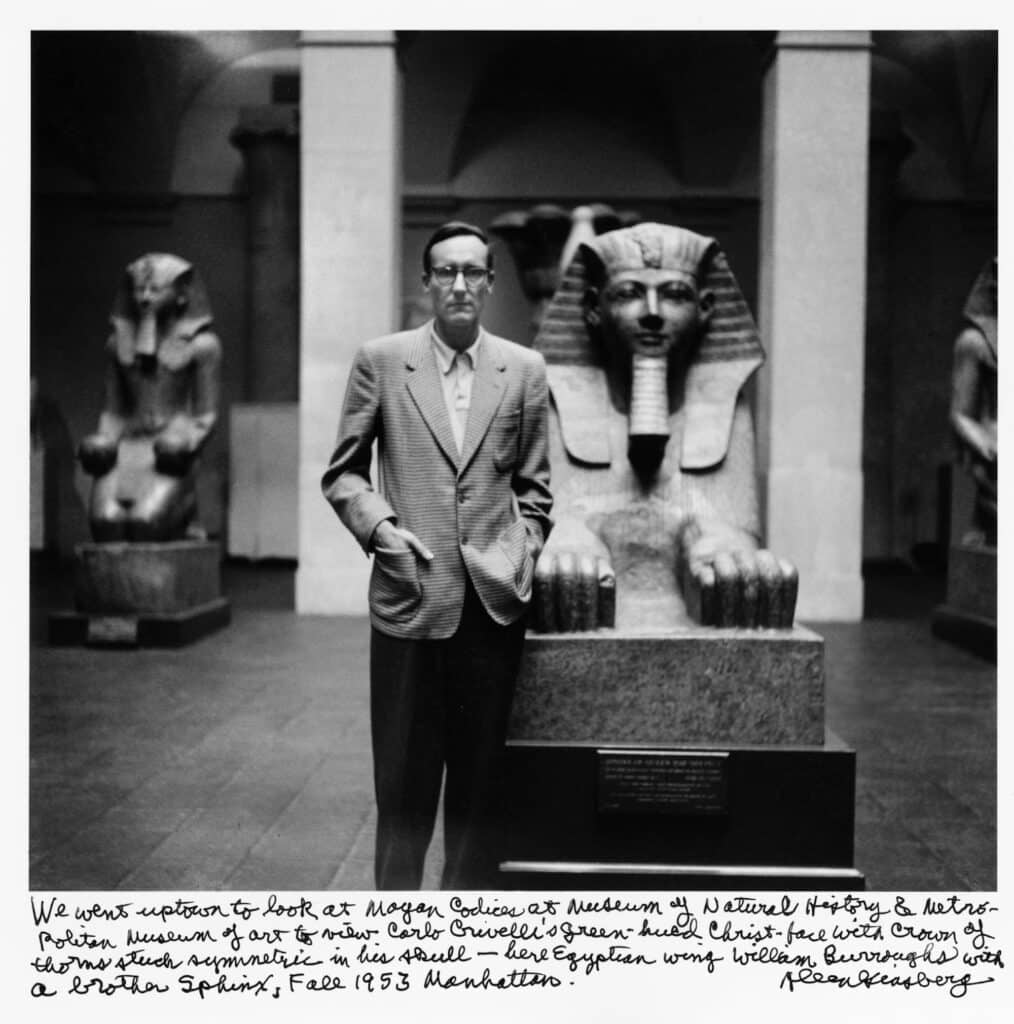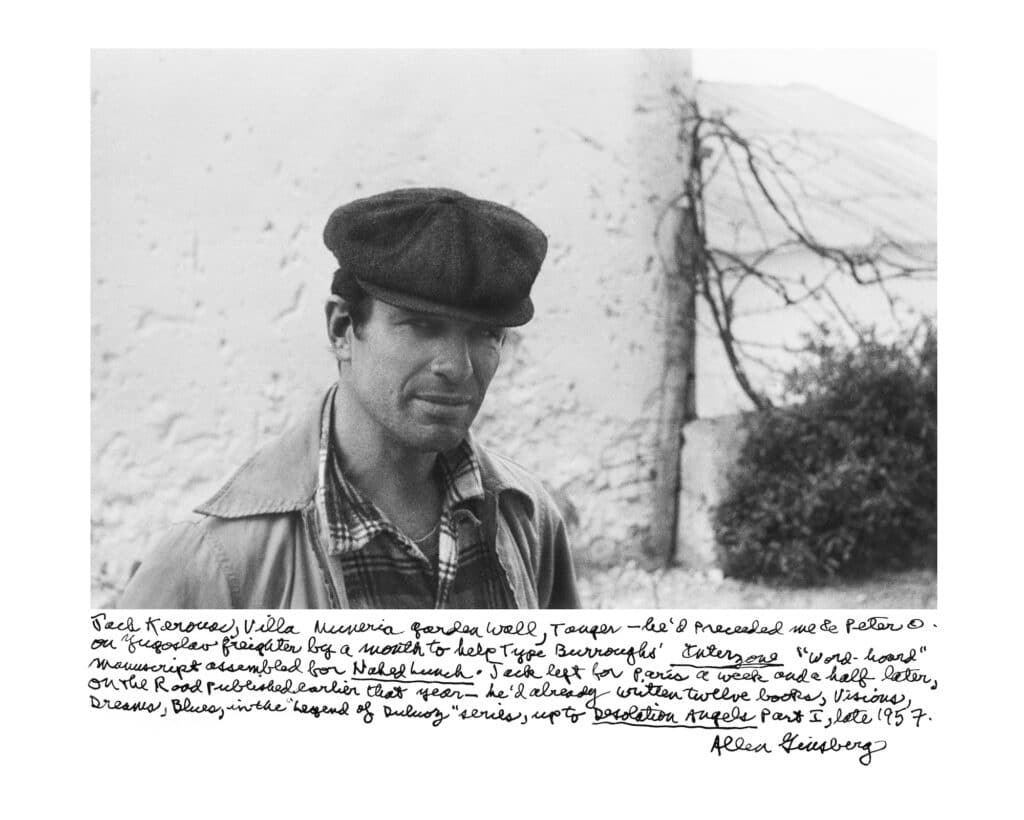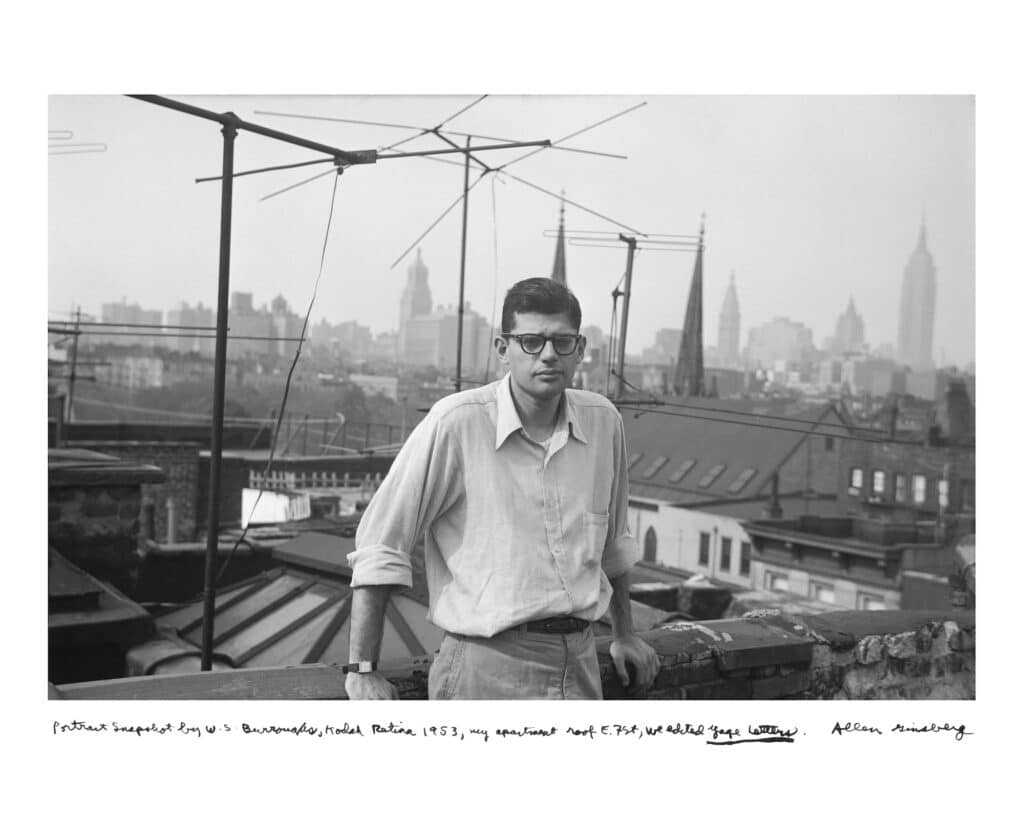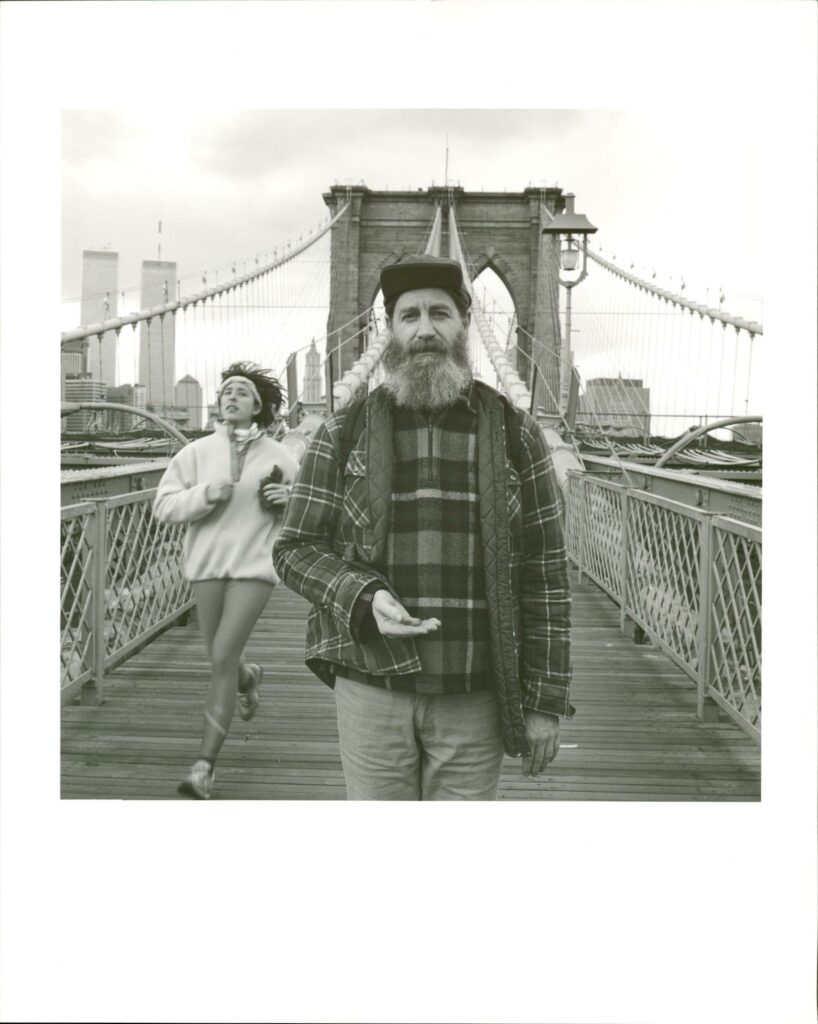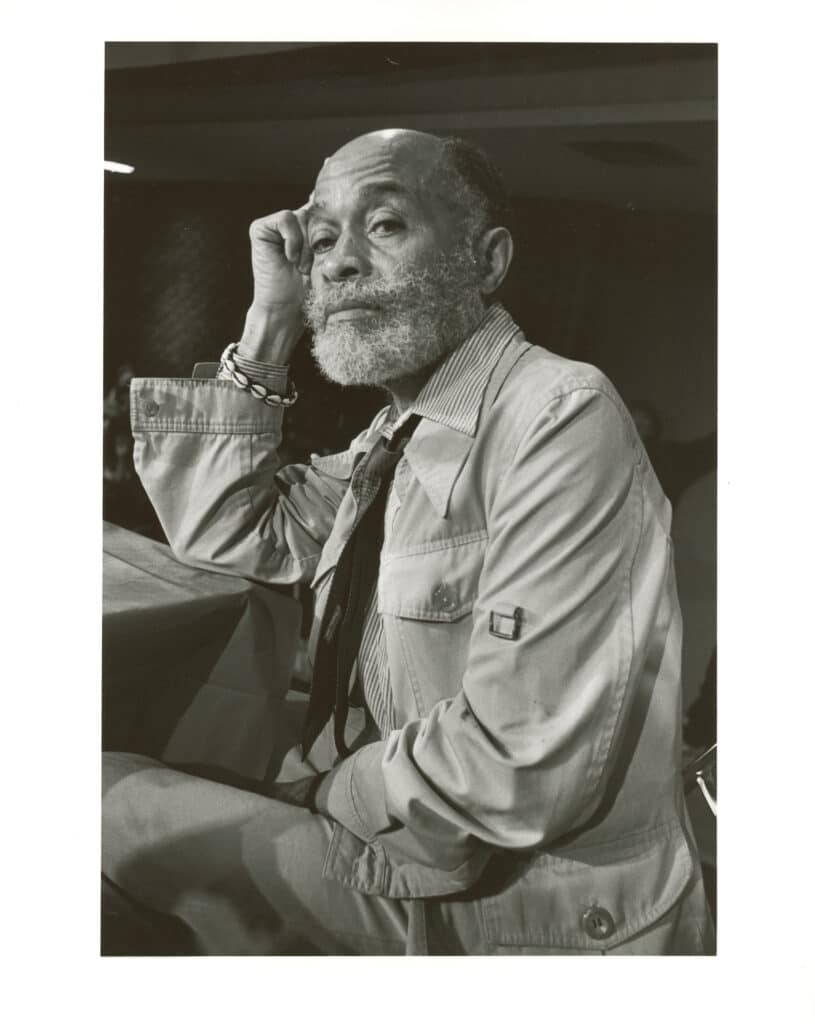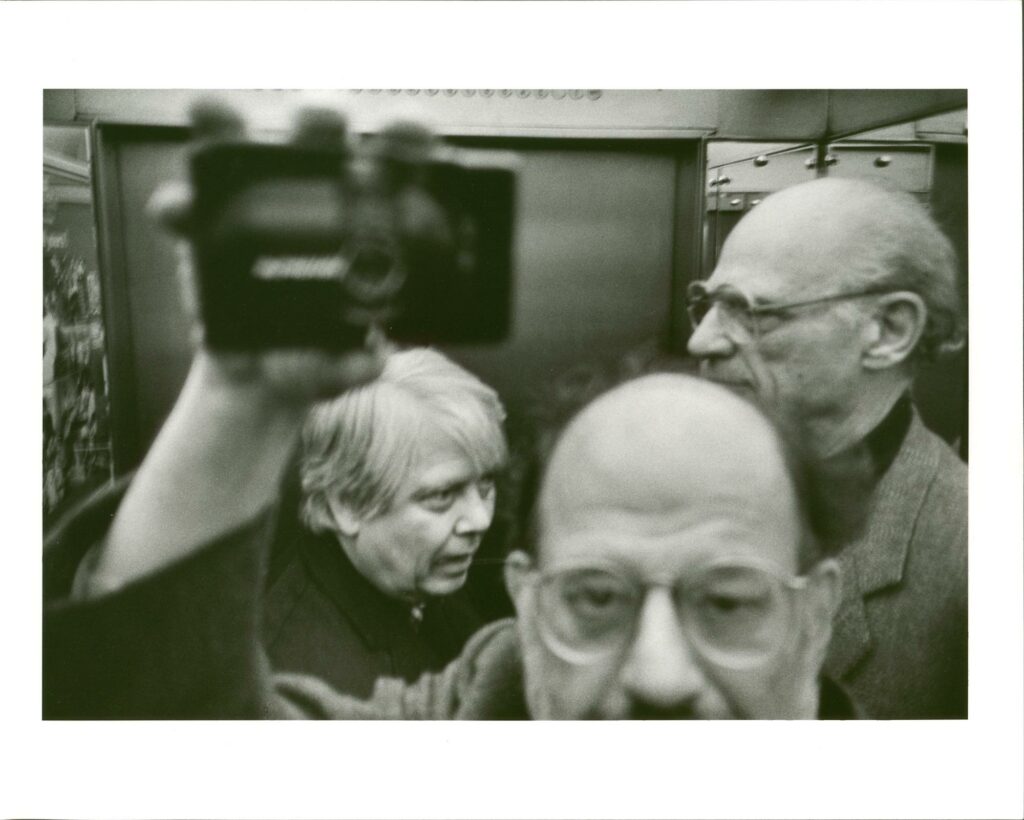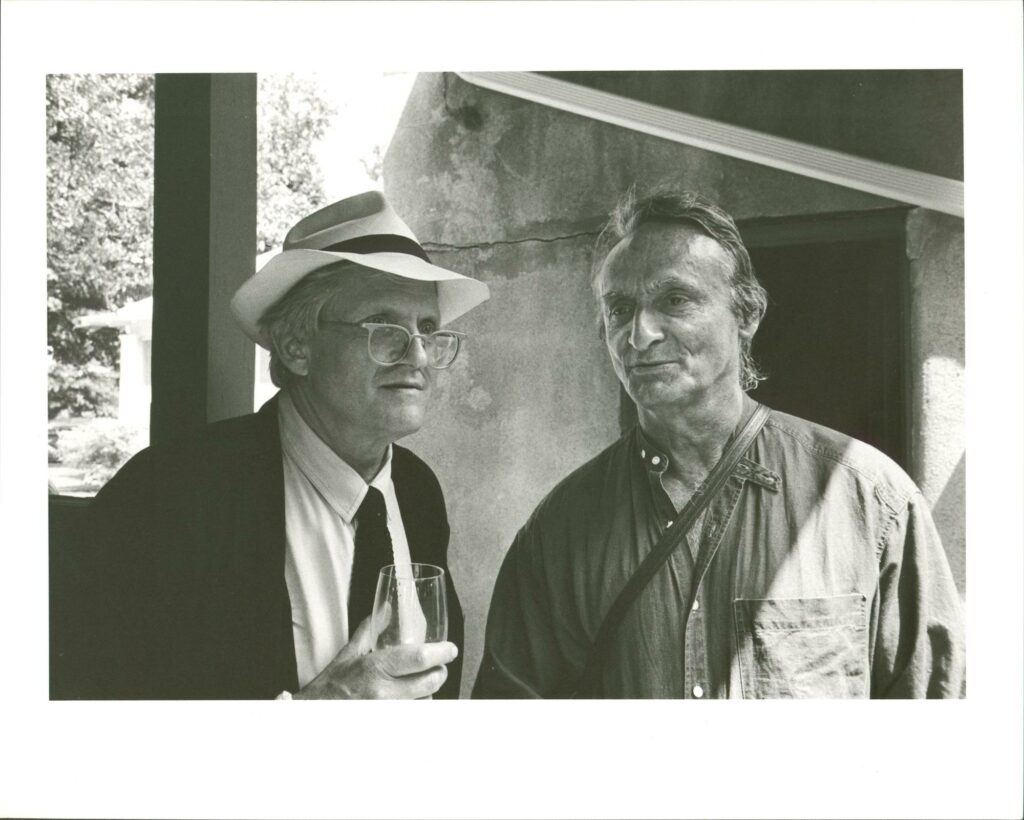During the fall of 1953, Allen Ginsberg and William S. Burroughs set off on a quest to see relics from bygone empires on display at Manhattan’s most prestigious museums. While strolling through the Egyptian wing of the Metropolitan Museum of Art, Burroughs struck a pose, standing shoulder to shoulder with a sphinx with a jaunty insouciance befitting two Beat poets seeking inspiration.
Like all good 20-somethings, they understood what this moment of mutual recognition needed was a photograph. Burroughs beckoned, and Ginsberg obliged, then detailed the day’s events in a handwritten caption four lines deep along the border of the print. Seventy years later, the image returns in a new exhibition fittingly titled Muses & Self: Photograph by Allen Ginsberg at Fahey/Klein in Los Angeles.
Ginsberg began photographing his intimate circle of friends and lovers back in 1944, just as the Beat Generation began making a name on the streets of Greenwich Village. He became serious about the medium in 1953, purchasing a Kodak Retina and using it to tell stories of love and tenderness whose name could not be spoken for fear of political persecution known as “The Lavender Scare.”
With homosexuality openly criminalized, many in the LGBTQ community were forced underground but Ginsberg went the other way, penning his groundbreaking poem “Howl”, which set the literary world aflame when it was published in 1956. “I saw the best minds of my generation destroyed by madness, starving hysterical naked,” Ginsberg began, peeling back the brutal erasure of respectability politics.
Cast against the long shadow of censorship, Christofascism, and white supremacy, Ginsberg refused to go gently into the night. He drew inspiration from his closest friends and in turn dedicated “Howl” to them: Kerouac, whose concept of “spontaneous prose” liberated Ginsberg on the page; and Burroughs, who lead by example.
“A fleeting moment in a floating world”
Deeply attuned to the flickering moments of moments of raw beauty, emotion, and intimacy that continuously revealed themselves amid our everyday lives, Allen Ginsberg was the consummate chronicler of the world in which he lived channeling the immediacy of the moment into a timeless work of art.
“The poignancy of a photograph comes from looking back to a fleeting moment in a floating world”
Allen Ginsberg
Like poetry, Ginsberg used photography to transform memory into artifact, so that the past could continuously live anew in the present tense. “The poignancy of a photograph comes from looking back to a fleeting moment in a floating world,” he observed.
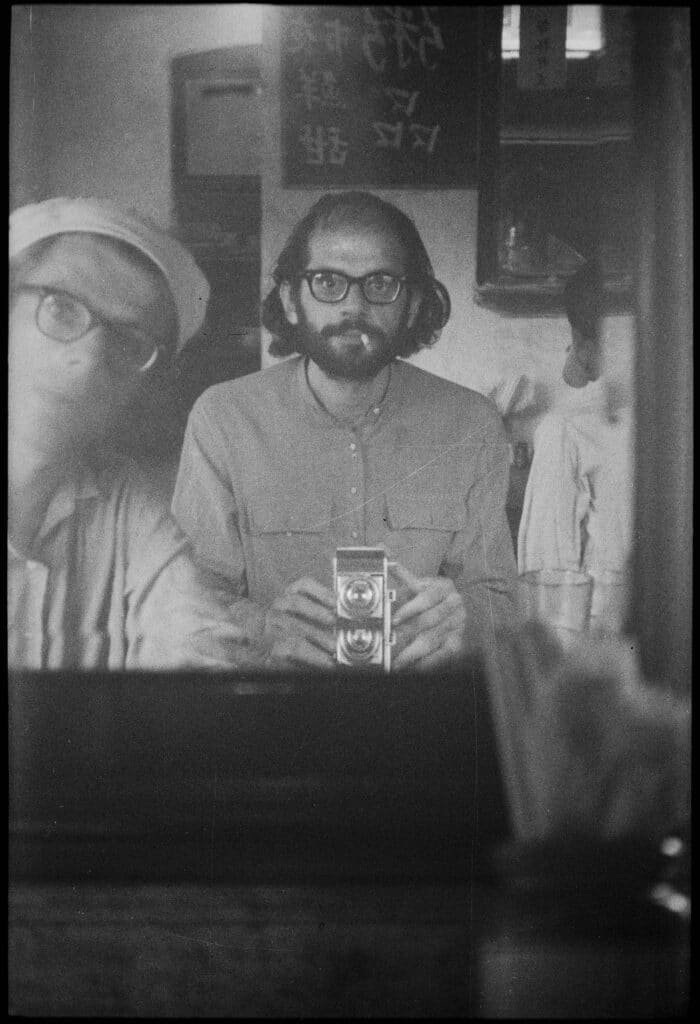
Ginsberg honed his photography practice over two distinct periods: from the early 1950s through 1960s, and later the 1980s until his death in 1997. His return to photography marked a new era in the art world, as the medium finally began to receive its proper due within the establishment. With the encouragement of Robert Frank and Berenice Abbott, Ginsberg traded in his mid-century snapshot approach for a slower, more reflective engagement with portraiture.
Whether photographing old friends or new acquaintances including artists Jean-Michel Basquiat, Keith Haring, Francesco Clemente, and David Hockney, or writers Toni Morrison, Arthur Miller, and Amiri Baraka, his deceptively effortless photographs reveal the ease with which he belongs exactly where he stands, crafting elegiac scenes that look like fragments pulled from memory.
Muses & Self: Photograph by Allen Ginsberg is on view through September 23, 2023, at Fahey/Klein in Los Angeles.

